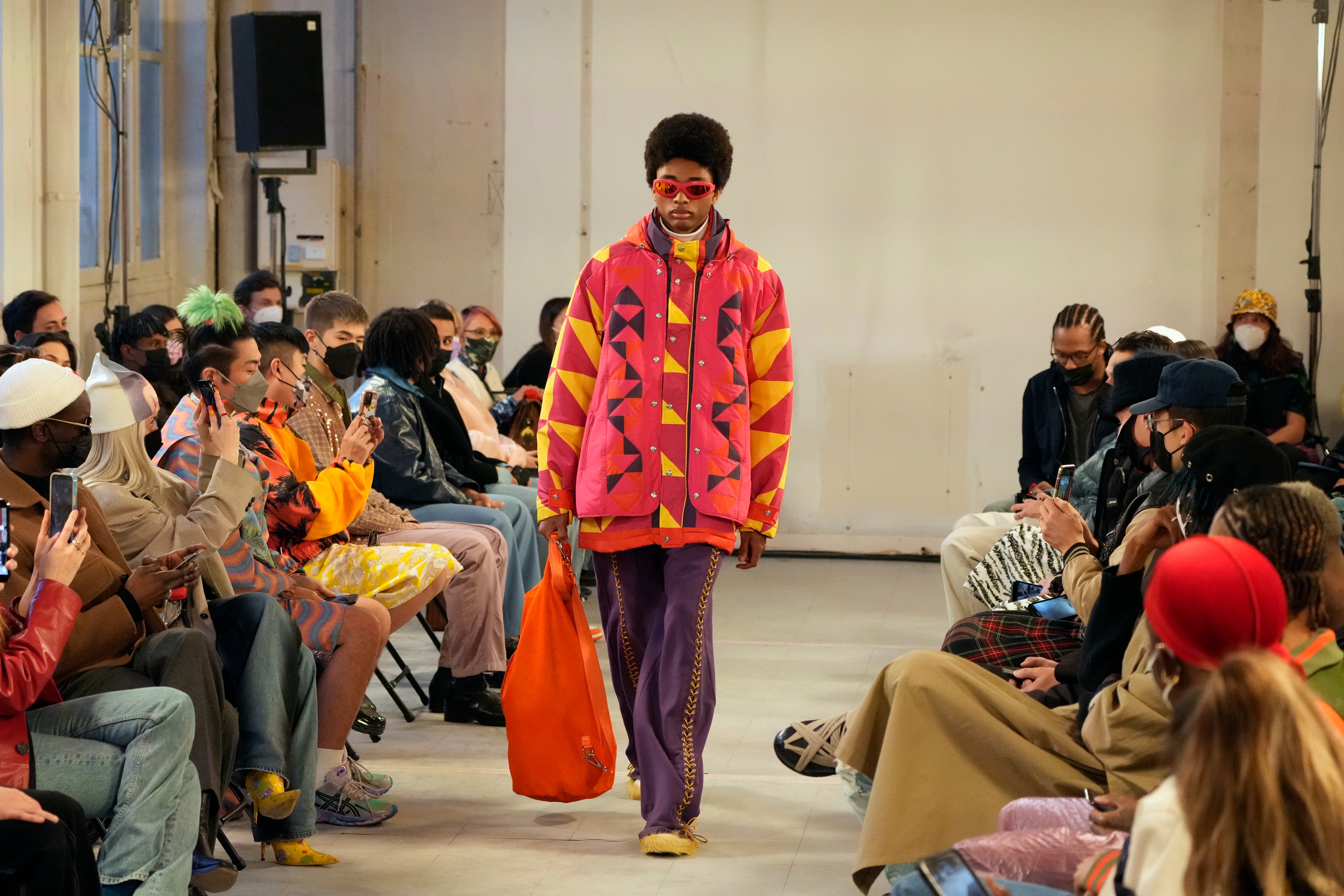Emerging talents in spotlight at hybrid Paris Fashion Week
A spattering of Paris Fashion Week menswear shows began in earnest this week for the fall-winter season as French government restrictions have seen many relegated to an online-only presence

Your support helps us to tell the story
From reproductive rights to climate change to Big Tech, The Independent is on the ground when the story is developing. Whether it's investigating the financials of Elon Musk's pro-Trump PAC or producing our latest documentary, 'The A Word', which shines a light on the American women fighting for reproductive rights, we know how important it is to parse out the facts from the messaging.
At such a critical moment in US history, we need reporters on the ground. Your donation allows us to keep sending journalists to speak to both sides of the story.
The Independent is trusted by Americans across the entire political spectrum. And unlike many other quality news outlets, we choose not to lock Americans out of our reporting and analysis with paywalls. We believe quality journalism should be available to everyone, paid for by those who can afford it.
Your support makes all the difference.A spattering of Paris Fashion Week menswear shows began in earnest this week for the fall-winter season, as French government restrictions have seen many relegated to an online-only presence.
Those brands which chose to maintain physical shows — like AMI on Wednesday — may not end up regretting it, benefiting as they seem to be from a relative boost in coverage. As ever, the start of collections principally showcase emerging talents, before the week leads to industry big hitters such as Dior Louis Vuitton and Hermes.
Here are some highlights of fall-winter 2022 shows.
CHRISTOPHE LEMAIRE
Tasteful and deceptively simple designs graced the Lemaire runway in a sublime collection. The 56-year-old designer, whose full name is Christophe Lemaire, is a master on the Paris calendar boasting a CV second to none and included a four-year stint as the head of Hermes from 2010.
These talents were on abundant display for his fall-winter show that employed fastidious detailing, pre-War styles in muted hues and plays on proportion for a thought-provoking statement.
Men’s and women’s designs fused effortlessly. Block heels of the 1970s mixed with the loose or dropped waists of the 1920s, while oversized coats looked at once 1930s and fashion forward.
The low energy of the restricted color palette of autumnal taupes, beiges, blue-grays was effective in giving this funky collection a classicism. Even the humble denim jacket evoked a timeless vibe, rendered loose and clean lined, with the feel of a young, optimistic 1950s United States.
STEVEN PASSARO
The pandemic has had a devastating impact on numerous fashion houses, forcing the cancellation of big budget, highly mediatized collections over government restrictions in favor of digital videos showcasing new designs.
Though these videos do draw global audiences on Instagram, fashion editors agree that the intoxicating mixture of in-person clothes, adrenaline, staging and celebrity that makes up a Paris Fashion Week show is hard to emulate on a digital platform.
But the new hybrid calendar hasn't only been bad news. It has been good for some: In particular, small houses. Steven Passaro, who’s featured on the official Paris Fashion Week line up for the first time ever, is one designer whose prominence has grown precisely because of the new digital style of presentation.
Passaro, 29, says that he didn't have the financial means to stage a fully fledged Paris Fashion Week with all its associated investment and razzmatazz. A video, on the other hand, was realizable.
“This is my first time on the calendar. It was possible because the (Paris fashion) Federation didn’t want me to do a show. Making a video means spending way less money,” Passaro told The Associated Press as he prepared the launch of his first video titled “We feel things they’ll never feel.”
“It gives smaller houses like us big opportunities,” he said.
Passaro, whose aesthetic mixes couture with applied tailoring and an emphasis on hypersensitive looks, graduated from London College of Fashion, before founding his eponymous brand in 2019. But buyers, he said, weren’t yet ready to take on his designs. Now, those that have been “watching my development” for a while have indicated that they want to buy his collection because he is featured on the official line up. “PFW helped us to be credible as a brand.”
Passaro also had thoughts on how the larger houses fared when faced with the unprecedented curtails to physical shows. The more old-fashioned and established houses — who tend to throw money at artistic problems — struggled to create worthwhile fashion videos at the start of the pandemic, he said, while the “young creatives who are used to thinking on their feet” were in their element.
BLUE MARBLE
Cultural fusion and a melting-pot mentality were elemental for designer Anthony Alvarez as he staged his first on-calendar show for his fashion label Blue Marble.
The brand name Alvarez borrowed from the iconic photographic image of the Earth taken in 1972 by the Apollo 17 crew as they coursed their way to the Moon. Clearly, it’s a branding symbol that harks to Alvarez’ heritage: He’s New York-born but a mixture of Filipino, Spanish, French and Italian roots.
Fittingly, the collection celebrated this globe-trotting vision with eye-popping color and myriad references. The first looks were said to be inspired by the hue-rich sails of traditional boats in the Philippines as they sail across the ocean.
Geometric shapes rendered in purples, yellows and pinks gave the collection a funky edge, as it mixed with tongue-in-cheek eccentric detailing.
Psychedelic knitwear, 1990s sunglasses, tailored coats with glittered hems mixed with ankle boots reminiscent of surf wear.
Alvarez is one further example of how the hybrid digital fashion calendar has shone a spotlight on smaller houses.